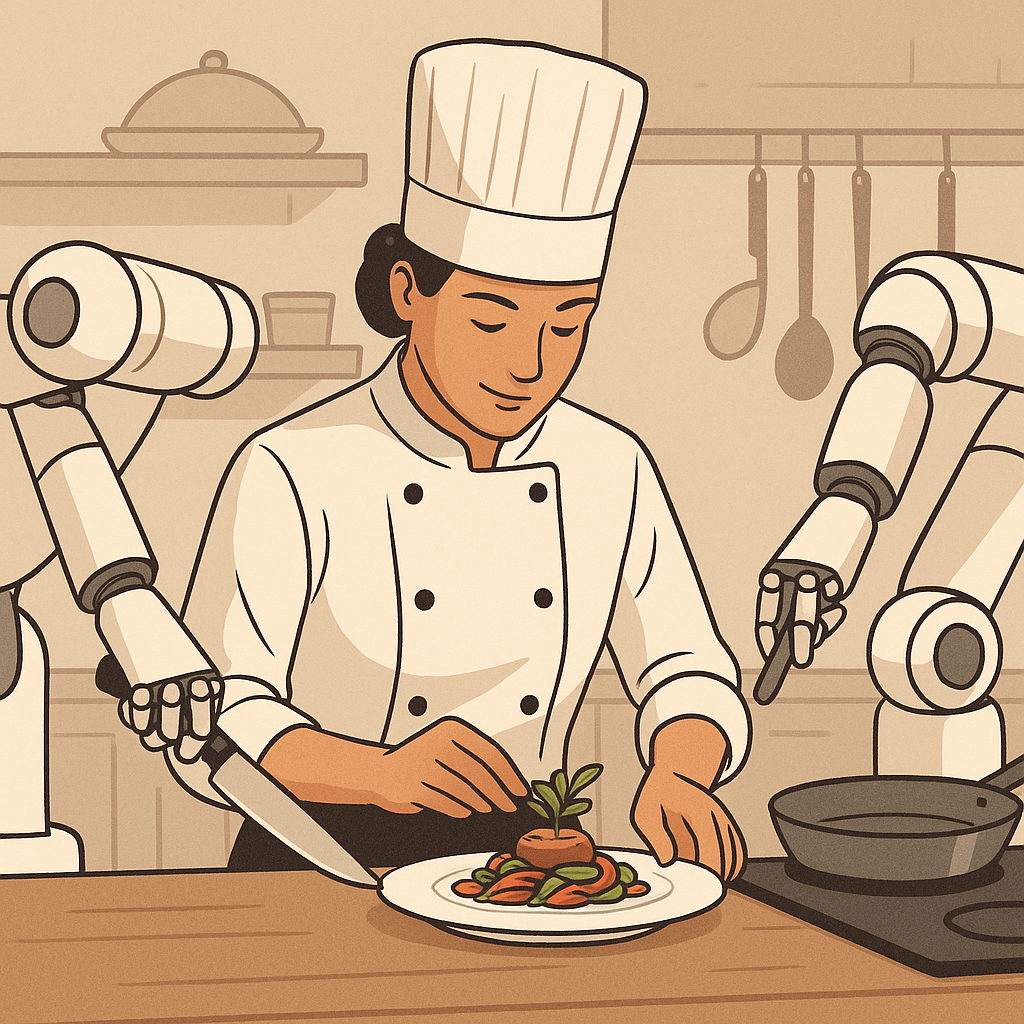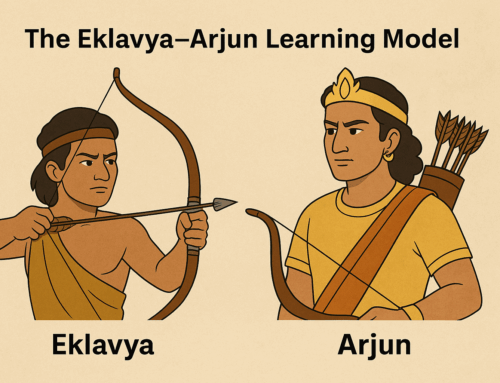Concerns about AI are everywhere today—fear of losing jobs, fear of losing creativity, and fear of becoming irrelevant. I often hear this question from friends, colleagues, and clients, and somehow I stay calm and assure them that nothing catastrophic will happen. These feelings are natural whenever a new, powerful technology emerges. But if history teaches us anything, it’s this: we adapt, and often emerge stronger.
Every major leap in technology has sparked a wave of uncertainty. Yet over time, these innovations have not only helped us survive—they’ve expanded our productivity, creativity, and potential.
Take the printing press.
Before Gutenberg’s invention of the movable type printing press in 1440, books existed, but they were few, expensive, and largely inaccessible to the common people. In those times, the ability to memorize long texts or read quickly was a genuine superpower, giving individuals an edge in courts, classrooms, and communities. However, Gutenberg’s innovation changed everything. As printed books became widespread, the advantage of memory and oral recitation began to fade. The focus shifted from retention to interpretation, from rote learning to critical thinking. Knowledge, once the preserve of scholars and scribes, began to spread to broader segments of society. Literacy rates soared, and a new kind of intelligence—rooted in analysis, reflection, and independent thought—began to shape the modern world. One can imagine that people at the time must have worried: would the new generation lose the powerful skill of memorization? Would something vital be lost? Yet history shows that something even greater emerged in its place. And what do we think about it now? We are undoubtedly better off without the need for such intense memorization.
Let’s understand this phenomenon with simple example! The skill of looking up words in a dictionary may also fade in newer generations. But do we really mind? Probably not.
We’ve seen this same pattern in modern times too—with writing skills.
When spell checkers became common, those with impeccable spelling lost their edge—everyone was suddenly on par. The spotlight moved to writing and composition. Now, with generative AI, even composition is becoming commoditized. It’s no longer about how well you can write, but how effectively you can tell a story. Narration is the new differentiator.
Consider communication: long before telephones or emails, messages were carried by pigeon post—a marvel of its time. These trained birds connected cities and battlefields, delivering vital news across great distances. For centuries, this was considered state-of-the-art communication. Then came the telegraph, telephone, and eventually the internet—each innovation feared for the jobs it might displace, from messengers to switchboard operators. Yet, these technologies didn’t just replace older systems—they supported a massive expansion in communication and human productivity. Without them, the modern pace of life—from global business to emergency coordination—would be impossible.
What once served kings and generals—strategic updates carried over days by pigeons—has now become instantaneous. A simple push notification can summon a cab, confirm a trade, alert a hospital, or connect family members continents apart. The world now operates at the speed of light, not wings—and we don’t look back.
Another relatable example is banking. When ATMs were introduced, many tellers worried about losing their jobs. Yet today, ATMs and digital payments have enabled banking to reach everyone. Millions who might never have visited a branch now have bank accounts, save money, and make secure payments with ease. Imagine if every small transaction still required a branch visit—the system would have collapsed under the weight of demand. Instead, automation expanded access and convenience beyond what traditional methods could ever achieve.
Another powerful example is aviation. When auto-landing technology was introduced, pilots worried that automation might erode critical flying skills. Yet today, auto-landing systems are essential—allowing planes to land safely in poor visibility, manage dense air traffic, and maintain precision during long, demanding flights. Without these systems, the scale and safety of modern air travel would simply not be possible. Automation didn’t replace pilots—it made aviation safer, faster, and accessible to millions. And it freed pilots to focus on higher-order judgment, adapting dynamically to real-world conditions rather than getting trapped in mechanical control.
Now, generative AI is doing something similar in software coding.
Tasks that were once the hallmark of elite “10x (performant) programmers”—such as choosing optimal data structures, crafting elegant syntax, and meticulously covering edge cases—are now increasingly assisted or automated by intelligent tools. However, this shift does not diminish the role of the developer. Instead, it elevates the value to those who can define problems clearly, structure their thinking logically, and communicate their intent with precision—skills that remain distinctly human and irreplaceable.
The real breakthrough with AI is not just automation—it’s amplification. Developers, writers, researchers, and creators are now able to produce, build, and solve problems faster and more effectively. We are not becoming redundant; we are becoming more productive.
We see similar concerns in the world of art. As AI models create paintings, music, and literature, some fear that human creativity may be overshadowed. Yet history shows us that every new tool—from the camera to the synthesizer—was once seen as a threat, but ultimately became a collaborator. Artists adapted, expanded their reach, and explored new forms. AI can handle technique, but true artistry—the originality, vision, and emotional connection—remains deeply human.
When a great chef prepares a dish, you don’t expect her to wash vegetables and chop onions. You want her to focus on adjusting flavors, refining presentation, and dynamically adapting to the moment. Similarly, with AI handling repetitive groundwork, the human creator is freed to focus on higher-order thinking and deeper expression.
Another quiet revolution is unfolding with Web 3.0.
Simply put, Web 3.0 refers to a new phase of the internet built around decentralization—where people can exchange value, form agreements, and collaborate without relying on big intermediaries. Through technologies like blockchain and smart contracts, Web 3.0 is making it possible for trust, ownership, and transactions to happen directly between individuals.
Imagine renting a house, trading goods, or forming a partnership without banks, agents, or even big platforms in the middle—just secure, transparent code. While it may feel unsettling today, much like early online banking once did, Web 3.0 could eventually unlock entirely new kinds of relationships, businesses, and freedoms that we are only beginning to imagine.
These are not the only examples, of course. But they are probably enough to alleviate the fear and remind us that every wave of technological change has ultimately expanded human potential, not diminished it.
Just like Gutenberg’s press, these tools democratize access, amplify productivity, and redefine expertise.
This isn’t the end of craft—it’s the beginning of a new one. Instead of memorizing, we’re organizing. Instead of doing everything manually, we’re guiding systems. The essence of mastery is shifting from precision to perception.
And while it’s easy to feel anxious about what’s changing, let’s not forget what’s enduring: human insight, clarity of thought, and the ability to ask the right questions.
The tools may change. The spotlight may shift. But the pursuit of progress remains beautifully human.
It’s not just that we benefited from certain technologies in the past. It’s that these technologies prepared us to meet the future’s challenges. Who knows—this AI revolution may be making us ready for something even bigger that humanity will be called upon to achieve. Perhaps it is quietly preparing us for it even now.
Subscribe to my newsletter, to get tips like this and more, directly in your inbox!
(Originally published in Times of India on April 25, 2025)






